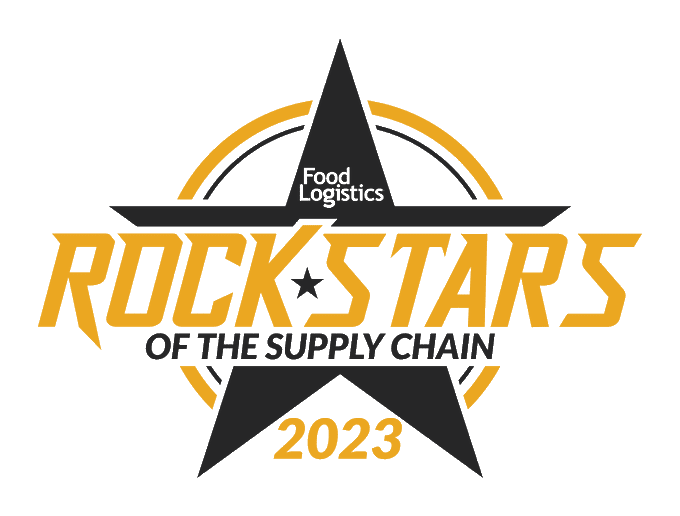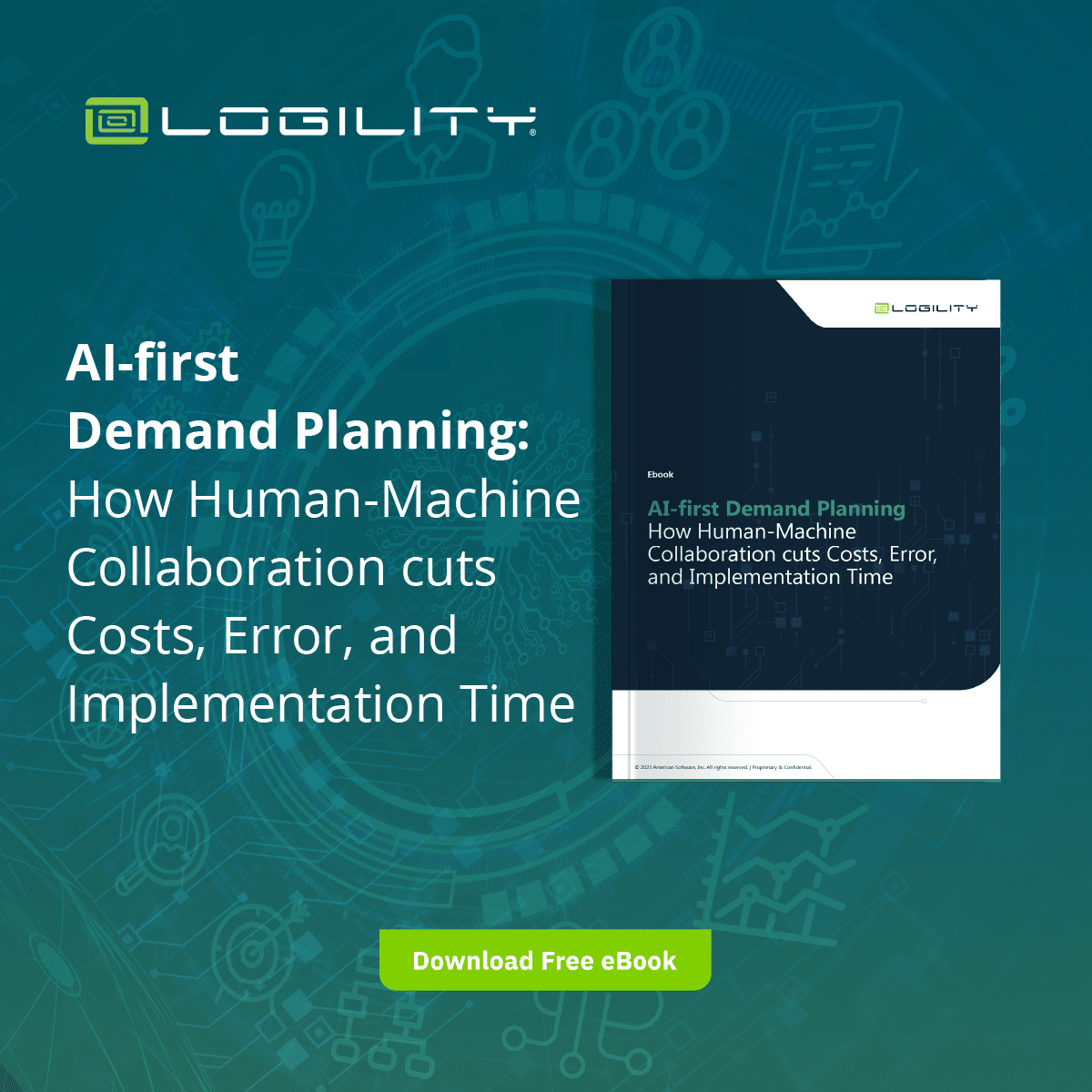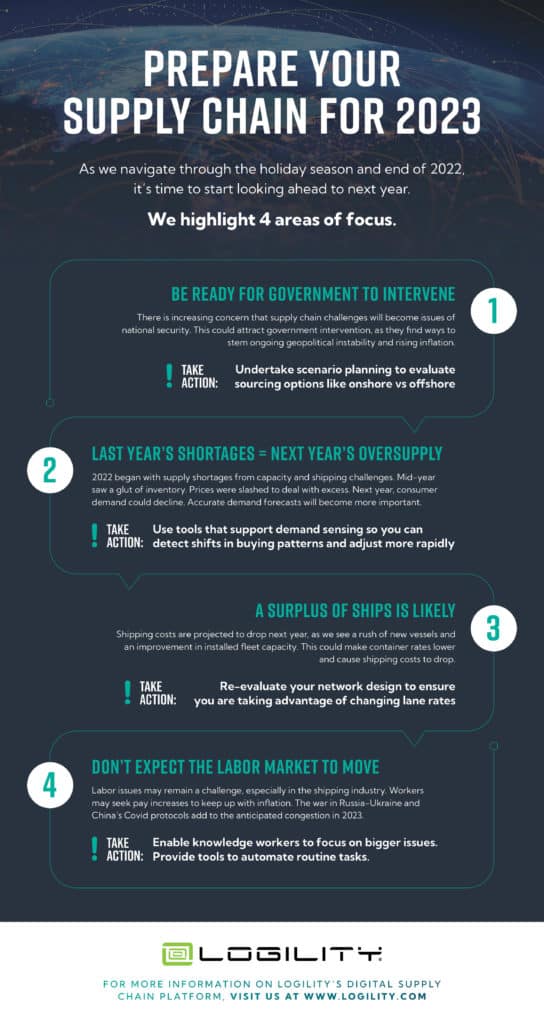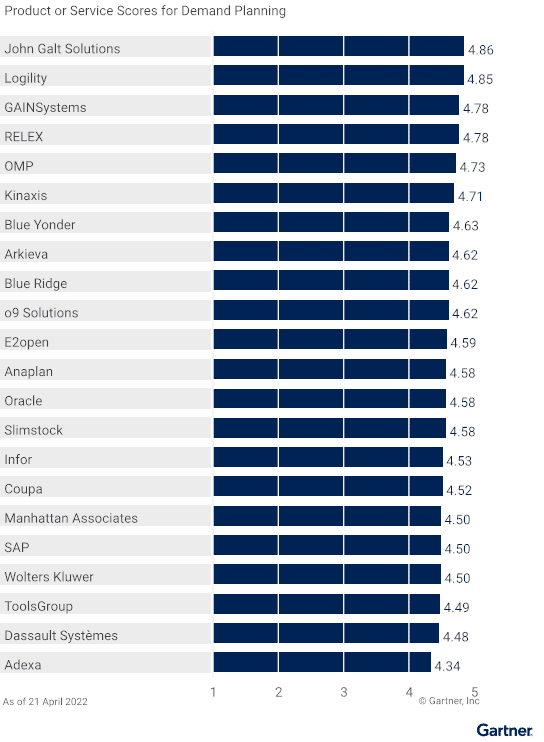No customer experience is more disappointing than not receiving an order as promised. Whether it is a damaged product, a shipping delay, or a complex chain of handoffs and rerouting, any mishap can damage market share, revenue growth, and customer relationships beyond repair.
Most B2B and B2C brands believe faster order processing, more frequent inventory planning, and “good enough” promise dates can help avoid this situation.
Yet they still struggle with contradictory pressures related to the cost savings of just-in-time manufacturing and inventory optimization, the economic realities of raw material shortages and inflation-induced pricing, and growing customer demand for sustainably made products.
To achieve that perfect balance between demand fulfillment and cost-effectiveness, you need a digital supply chain platform that provides the processing power, data management and integration, and analytics necessary to analyze each order against product availability, capability to fulfill the order, and profitability of the order promise.
Here are three ways to boost your customer satisfaction with automated order promising.
1. Fast Commitment to Accurate Promise Dates
Suppose your supply chain planners work 24/7 reviewing every purchase, slotting it in the packing and shipping schedule, and notifying suppliers when more products should be manufactured. In that case, customer orders are most likely to be fulfilled as promised. However, this is not a cost-efficient or sustainable arrangement.
Your planners still need to go home, even if orders don’t stop coming in. As a result, it is all too easy for product orders to exceed inventory availability, leading to overpromised fulfillment and delayed delivery. And let’s face it: no one wants to reach out to a customer with that unwelcome news.
What if promise dates are processed in real-time without human intervention? As orders are received, the digital supply chain platform automatically matches the order to existing or planned inventory (ATP), and if there is none to allocate it will then check capacity and materials availability (CTP) to provide accurate delivery dates, in real-time, that your customers can rely on.
2. Reasonable Delivery Dates Without Surprises
With automated order promising, your supply chain planners can benefit from the real-time analysis of every single order against business constraints.
The platform accepts orders from ERP, eCommerce sites, customer service areas, and dealer/customer portals. These orders will be immediately processed first running an ATP check and if nothing is available for the order then running a CTP check. CTP analysis considers business constraints on inventory, production schedules, capacity, lead times, materials and other supply chain parameters which affect the ability to provide the product to the customer. The customer is then informed immediately with a realistic expected delivery date.
When planners come in the next day there should be no surprises, no ‘oh no we can’t do this’ in the 20 days our default promise date was set to. Now consider this additional stability in your planning organization; no longer living a life of calling customers with bad news on delayed orders and no more constant fire-fighting and expediting.
This accurate and real-time communication at the point of the transaction brings tremendous value to your customer experience. Your customers will know right away what to expect and are allowed to accept or reject the new order and delivery agreement. Furthermore, your supply chain gains the flexibility to avoid being overburdened by unreasonable delivery dates, so you can respond in ways that keep customers satisfied and loyal.
3. Early Order Arrival with Greater Visibility
By running automated order promising in the background, your business gains a connected ecosystem of eCommerce sites, order-taking applications, and your ERP that can capture orders accurately and provide visibility into your company’s capacity to fulfill them. But more importantly, your planners can derive data-driven insights to evaluate different options for improving customer satisfaction.
Suppose a customer called in an order for 500,000 units of one of your more popular products. A planner would need to check in a distribution center (DC) nearest to the customer’s location to see if the right quantity is available. If not, the production manager would need to determine whether a facility has the capacity to manufacture the product quick enough to meet the promised delivery date.
This traditional process flow depends on people to process the request, research availability and capacity, and get goods all in one place to fulfill an order. It’s manual, laborious, and too slow for a world accustomed to immediate answers and results.
Automated order promising eliminates all those drawbacks. Based on predefined business rules, the technology can rapidly pull real-time inventory information from the closest DC. And if the requested quantity is not available, the system automatically expands the search to surrounding DCs and considers trucks expected to drop shipment to that initial DC. In addition, the customer can be notified on whether the order will be delivered on time or at a new date.
And here’s the best part: all of these tasks can happen in a matter of minutes, not days. Furthermore, by automatically expanding your inventory, the customer’s need is met while you reduce costs by avoiding a short production run, expedited shipping, and hours of work that employees could use for more strategic activities.
From Guesswork to Informed Order Promising
Ten years ago, it may have felt natural to have supply chain planners make assumptions about lead times, expected order volumes, and future order capacity based on seasonality, buying behaviors, and customer consumption. But nowadays, businesses are encountering trend lines that are no longer as stable, slow-moving, or predictable as they used to be.
With the automated order promising capabilities of the Logility Digital Supply Chain Platform, your business can navigate every unexpected – and expected – twist and turn in your supply chain operations.
As a result, your planners can better position inventory, honor shipment dates, and ensure orders remain profitable – all while keeping customers satisfied and loyal.
How can your business benefit from the automated order promising capabilities of the Logility Digital Supply Chain Platform? Find out by watching our on-demand webcast “Automated Order Promising to Improve Customer Satisfaction.“



